TEASER - 22
HONEY COMB
Honey bees make hexagonal cells / combs, because?
(a) Round combs are out of fashion
(b) Bees know no other comb making
(c) For economy and geometric reasons
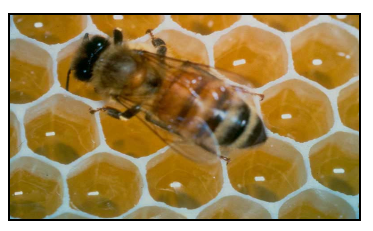
THE EXPLANATION:
The honeybee, one of man's oldest friend is a social insect living in large colonies. The central feature of the bee hive is its nest the honeycomb and this marvel of engineering consists of panels of six- sided cells (cylindrical cells) made of beeswax. Beeswax is produced from glands on the underside of the worker bees which they take with their mouths into the honeycomb. The cells within the comb are used to raise young ones and store honey and pollen.
There can be two classes of cylindrical cells:
(a) Class one are those types of cylindrical cells when packed together fit perfectly with each other. They are hexagonal (six sided), trigonal (three sided) and tetragonal (four sided) cells.
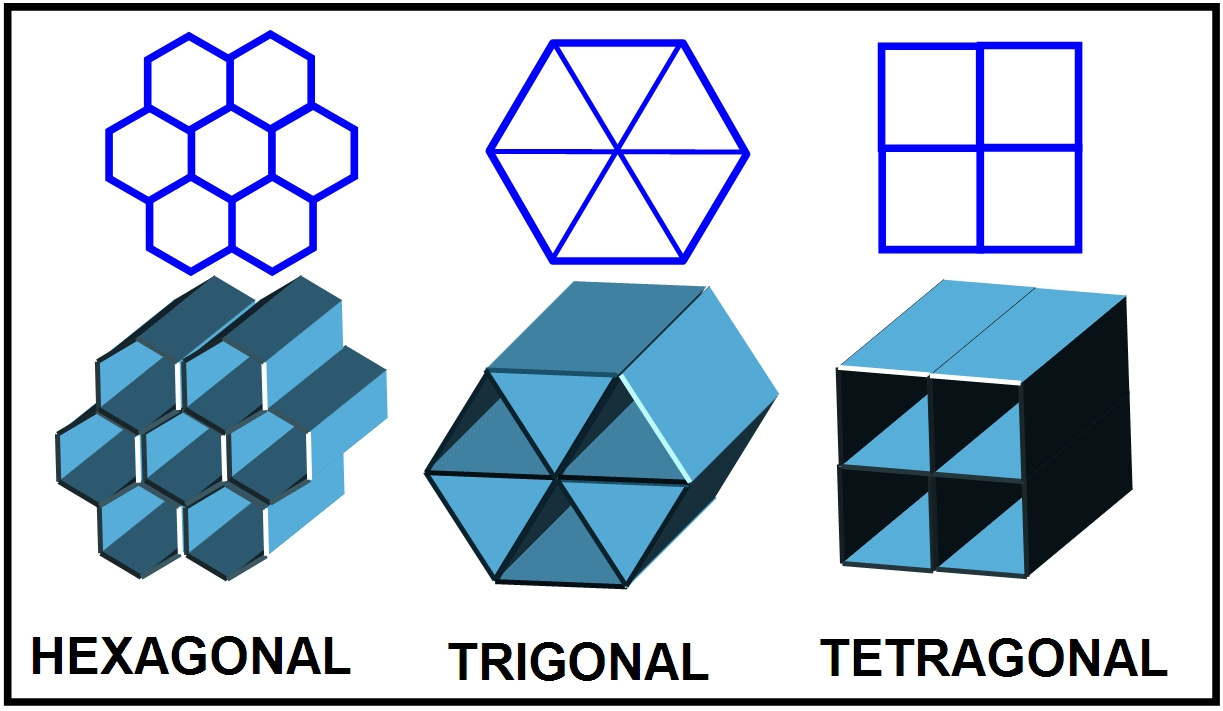
CLASS ONE TYPE OF CELLS
(b) Class Two are those types of cylindrical cells when packed together do not fit with each other and leave gaps in between. They can be pentagonal (five sided), octagonal (eight sided) or round cells (infinite sided) and so on.
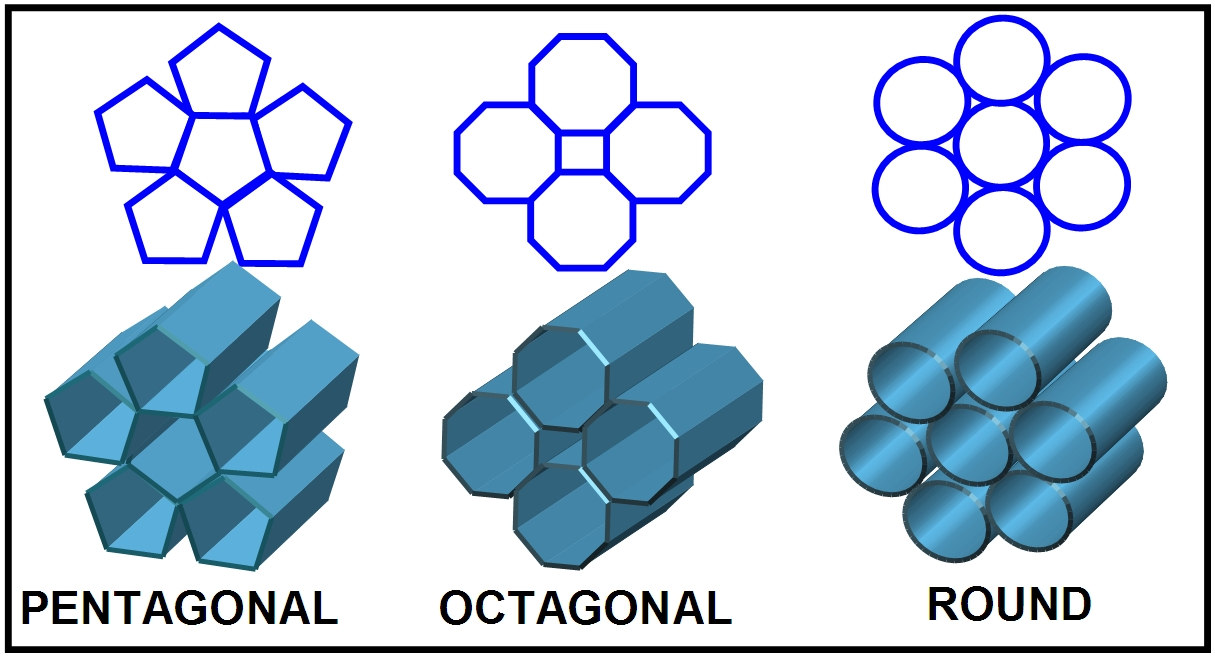
CLASS TWO TYPE OF CELLS
Why Hexagonal cylindrical cells:
1. When round cells or cylinders are packed together on a plane, six cells remain in touch with the central one at a time. Geometrically the best fit or the maximum cells that can be packed in a minimum space would always produce a hexagonal (six) mesh.
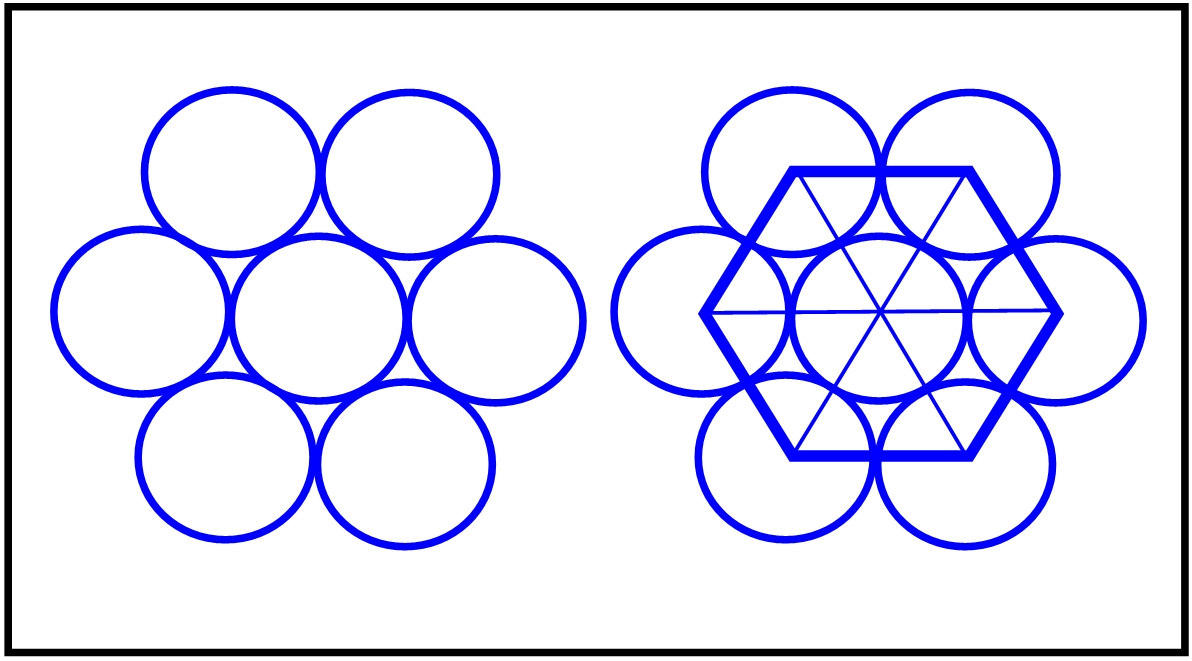
ROUND CELLS PACKED TOGETHER
2. Round cylindrical individual cells are most suitable for keeping young ones, as larva and young ones also have round shape and fit 100%. However, two deficiency occur when round cells are packed together
• The round cells leave plenty of unused inter-cellular space. This adds up to the total required area for a unit hive.
• The wall of individual cells have minimal contact with each other hence separate and independent walls for each cell is required to be made every time a new cell is made. This adds up to the total wall length required to be constructed in a unit hive.
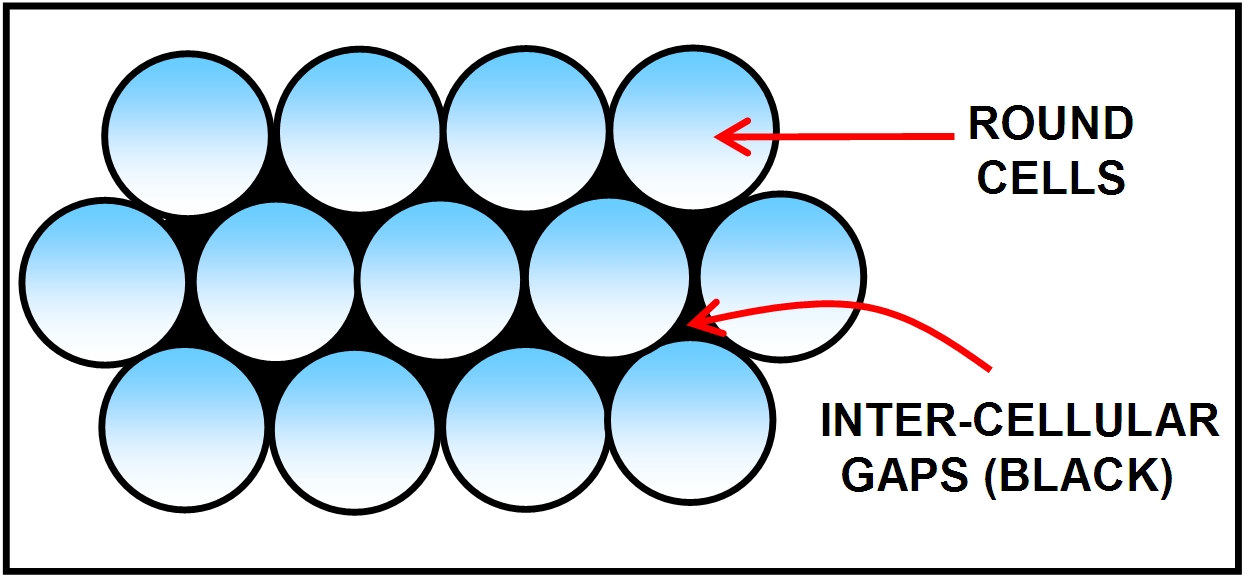
ROUND CYLINDERS PACKED TOGETHER
3. The square and triangular shaped cells, although produce a perfect fit, are also not favored because;
• Since, larvae are round in shape, plenty of intra-cellular space are left unused at the corners within cells.
• The unused portions within cells add up to the total space in a hive, hence less number of cells would fit in a unit space.
• The unused intra-cellular space, increases the net volume of individual cell and also increases the length of wall, hence more material and more labor for bees.
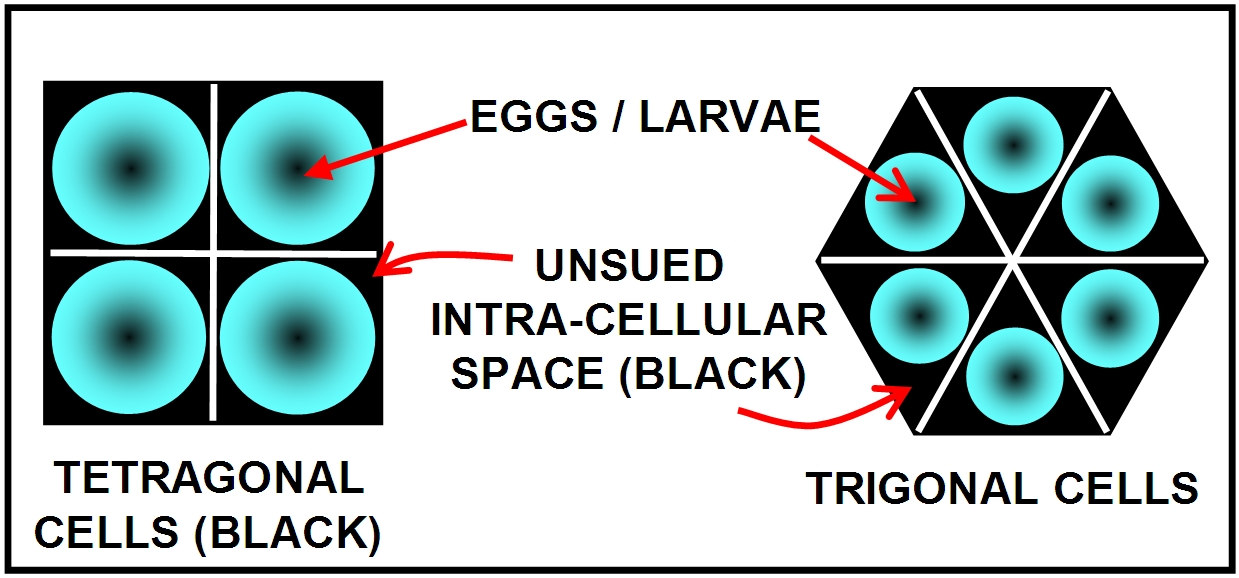
ROUND AND TRIGONAL SHAPED CELLS PACKED TOGETHER
4. The hexagonal cells (cylindrical) are favored as it minimizes the above mentioned shortcomings in a bee hive:
• The hexagonal cylindrical cells, when packed together has 100% wall contact and leave no inter-cellular gaps therefore cells occupy less space in unit hive.
• Hexagonal cells share cell wall equally, thereby minimizing total length of wall in a unit hive.
• Round eggs or larvae closely fit in a hexagonal cell and wastage of intra-cellular gaps are minimal.
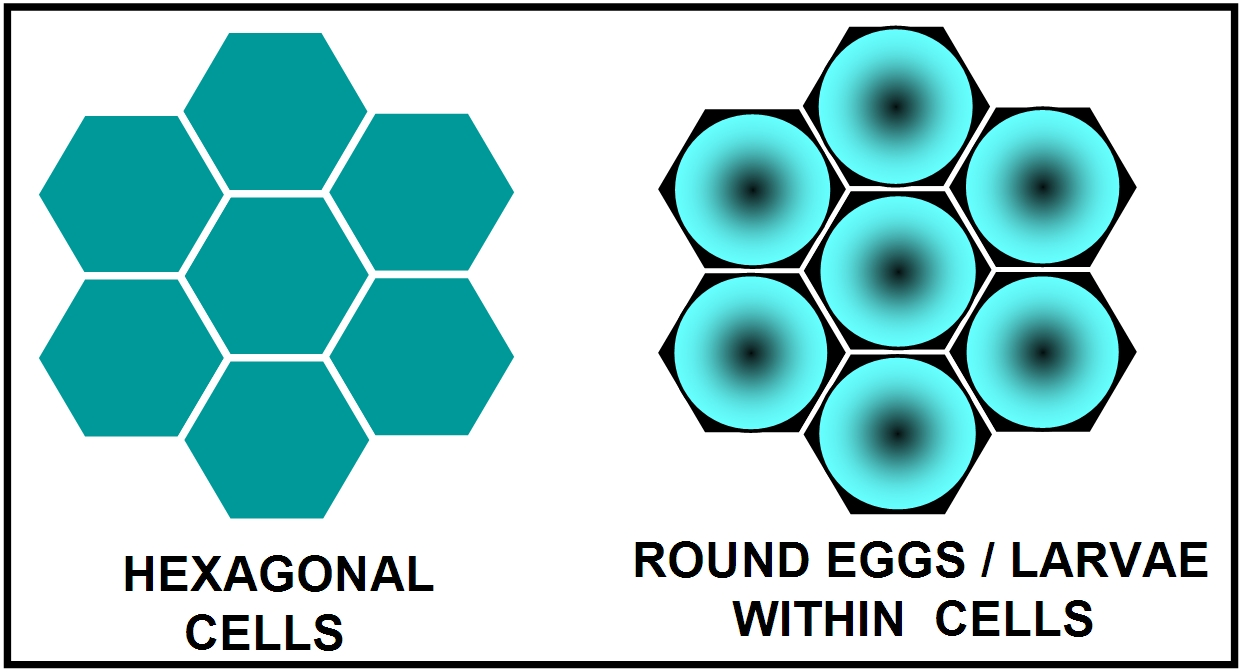
HEXAGONAL CELLS PACKED TOGETHER
5. Take for example a plateful of oranges of same sizes and round shape. Maximum six (hexa) oranges can remain in contact with a single central orange in a pack. When they are squeezed tightly together, round shaped oranges convert to hexagonal oranges automatically without any change in individual orange volume. The inter-orange space vanishes and the walls (peels) become common.
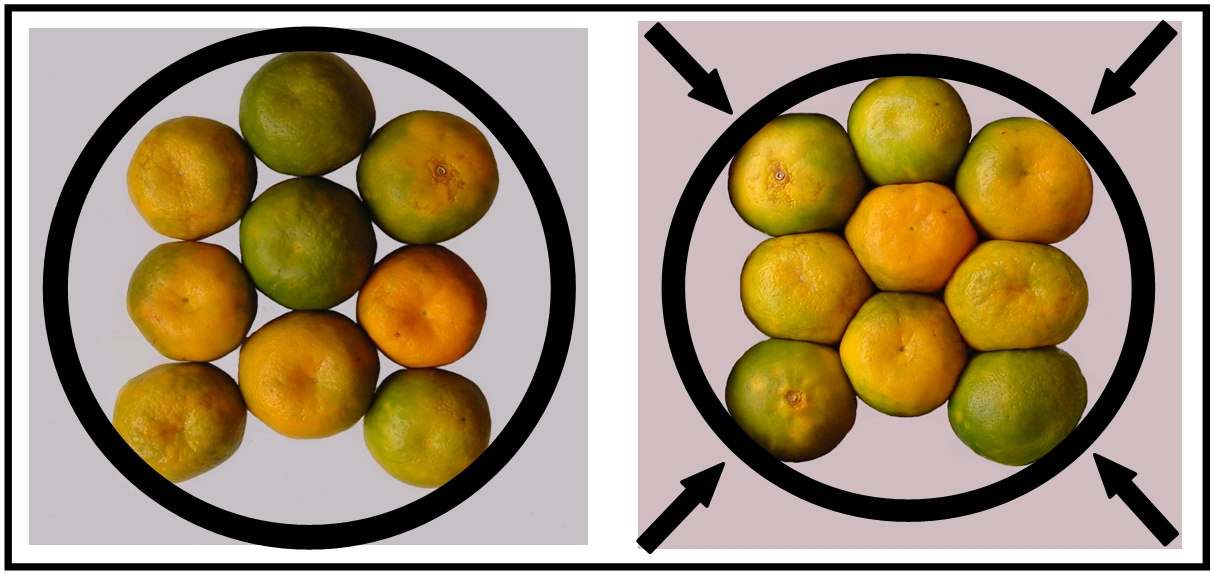
SPHERICAL OBJECTS (ORANGES) PLACED TOGETHER AND WHEN SQUEEZED TIGHTLY
6. Similarly, when finger tips of both hands are joined opposite to each other on a plane (left below) gaps remain between finger tips as they are round shaped. However, when fingers are pressed towards each other the gaps vanish and the finger tips attain half hexagon shape.
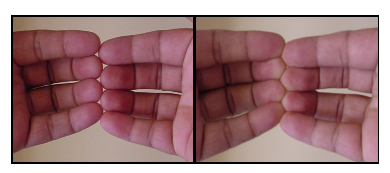
FINGERS PUT TOGETHER LEAVE GAPS BUT WHEN SQUEEZED TIGHTLY GAPS VANISH AND HAEXAGONAL OUTLINE EMERGES
These examples show that hexagonal honey combs are based on fundamental geometric and economic reasons. Perhaps science of geometry was inherent in nature before humans understood and perfected it.
********












